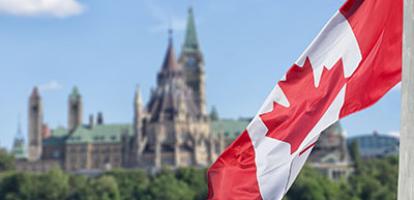The Bank of Canada met market expectations last week by raising its policy rate by 25 basis points, to 4.5 per cent. The bank also changed its tone from hesitant caution to guarded optimism. Its message: Hikes might just be over.
In December, the bank made clear that any further tightening would depend on the data. This time, it stressed that if inflation declines in key sectors to the extent it forecast in its latest Monetary Policy Report, it will hold the policy rate steady and pause to assess the impact of its cumulative rate hikes. A terminal peak of 4.5 per cent would also be in line with the most recent C.D. Howe Institute Monetary Policy Council announcement.
We expect — as most Canadians likely hope – that the bank will conclude it has done enough.
For much of the past year, it has been fighting inflation that has been way above target, peaking at 8.1 per cent in June. The pace of rate hikes has been correspondingly (and appropriately) remarkable. The challenge in this fight is always knowing when to stop. Monetary policy works with a lag, both when the bank lowers its policy rate and when it raises it. People don’t necessarily feel the effects of rate changes right away and predicting exactly when they will hit is difficult.
What makes us think inflation will work its way back to two per cent without the policy rate having to be raised again?
First, as it has been since July, the month after inflation peaked, the yield curve on Government of Canada debt is inverted: the return is higher on two-year than 10-year bonds. Inverted yield curves often portend slowdowns in economic growth. Markets tolerate low long-term interest rates only if they believe long-term inflation rates will also be low.
Second, the bank’s rate hikes last year have already slowed spending on interest-sensitive goods, including houses and automobiles, and the effects are spreading to other sectors, such as services and travel.
Third, because monetary policy works with a lag it is always critical to look at leading indicators. The OECD has a “composite leading indicator index,” which combines a series of economic variables, including consumer confidence and business hiring, that best predict turning-points in the business cycle. Since May, the Canada index has been both below its long-term average and continuing to decline. That suggests a slump is coming.
Fourth, money growth is on the decline, with the growth of broader money (M2++) as low as it has been since 2003, while narrower money (M1+) is actually shrinking. When inflation is unanchored from its target, money growth becomes a good predictor of where prices are headed. Less money in the economy can temper the demand for goods and services, which helps reduce inflation.
Finally, as we have argued in these pages, the headline or year-over-year inflation number is mostly old news. The latest, 6.3 per cent in December, includes monthly inflation over the first half of the year, which, as mentioned, peaked in June at 8.1 per cent. More recently, the CPI actually fell by 0.1 per cent month-over-month between November and December.
A single month’s number can be a fluke, of course. But the three-month annualized inflation rate from September to December, though still high at 3.4 per cent, was not far above the bank’s target range of one to three per cent. The National Bank of Canada calculates a three-month core inflation rate that excludes not only food and energy, but also mortgage interest costs. It was running at 2.4 per cent in December and, more importantly, falling fast.
All the major Canadian chartered banks are now predicting real GDP will decline for at least one quarter this year. The Bank of Canada predicts instead that GDP growth will “stall” through the middle of 2023, which could mean one quarter of negative growth offset by positive growth in the other quarter. Either way, further rate hikes could push us into — or deeper into — a recession, which everyone, the bank included, would like to avoid unless stalled growth is not enough to take the wind out of inflation.
In our view, the bank’s emphasizing that there are signs inflation is weakening is a welcome development, as is its wait-and-see approach. It is navigating the delicate balance between showing it is committed to bringing inflation back to target and assessing whether its hikes are now sufficient to attain this goal. We think it has that balance right.
Steve Ambler is professor of economics, Université du Québec à Montréal, and David Dodge Chair in Monetary Policy at the C.D. Howe Institute, where Jeremy Kronick is director, monetary and financial services research.
Published in the Financial Post





